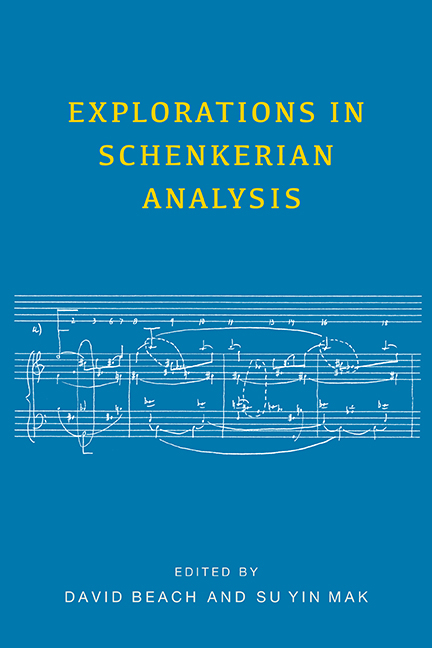Book contents
- Frontmatter
- Contents
- Preface
- Part One Eighteenth Century
- 1 A Letter about the C-Major Fugue from The Well-Tempered Clavier, Book 1
- 2 The Opening Tonal Complex of Bach's St. Matthew Passion: A Linear View
- 3 Recurrence and Fantasy in C. P. E. Bach's Rondo in G Major
- 4 Voice-Leading Procedures in Galant Expositions
- 5 The First Movements of Anton Eberl's Symphonies in E-flat Major and D Minor, and Beethoven's Eroica: Toward “New” Sonata Forms?
- Part Two Early Nineteenth Century
- Part Three Late Nineteenth Century
- Appendix: An Interview with Edward Laufer
- List of Contributors
- Index
4 - Voice-Leading Procedures in Galant Expositions
from Part One - Eighteenth Century
Published online by Cambridge University Press: 28 June 2018
- Frontmatter
- Contents
- Preface
- Part One Eighteenth Century
- 1 A Letter about the C-Major Fugue from The Well-Tempered Clavier, Book 1
- 2 The Opening Tonal Complex of Bach's St. Matthew Passion: A Linear View
- 3 Recurrence and Fantasy in C. P. E. Bach's Rondo in G Major
- 4 Voice-Leading Procedures in Galant Expositions
- 5 The First Movements of Anton Eberl's Symphonies in E-flat Major and D Minor, and Beethoven's Eroica: Toward “New” Sonata Forms?
- Part Two Early Nineteenth Century
- Part Three Late Nineteenth Century
- Appendix: An Interview with Edward Laufer
- List of Contributors
- Index
Summary
Graduate Center of the City University of New York.
Modern analytic approaches to sonata form generally take for granted that expositions normally divide into two large theme groups linked by a transition. This two-part analytic model has much to recommend it, for it helps to highlight the dramatic dialectic that lies at the heart of many sonata expositions composed during the high classical period. Analyzing an exposition in terms of two contrasting theme groups can also shed light on its voice-leading structure, since middleground prolongations often correlate directly with these thematic groupings.
Despite their importance in modern analytic discourse, however, large thematic groups in expositions went entirely unnoticed in publications throughout much of the eighteenth century. Not until the last few years of the 1700s was there any published indication that musicians recognized the presence— much less the importance—of a secondary theme within what would now be labeled a sonata-form exposition. Even when they did point to features that today would clearly be associated with secondary themes, music theorists of the time seemed not to notice the groupings that result.
That eighteenth-century theorists did not discuss such thematic groupings makes much sense, considering the repertoire with which they were concerned. After all, they examined not only works from the high classical period but also works composed earlier, including those from around the 1750s through the 1770s. For works composed during this earlier era, the formal descriptions proposed by eighteenth-century theorists work particularly well. The same might be said even for certain works from later decades by composers—most notably Joseph Haydn—who continued to employ formal procedures that were developed closer to the middle of the 1700s.
Modern analytic approaches to sonata form, by contrast, tend to take as their starting point procedures that developed in the high classical period or later. When examined through the assumptions inherent in modern analytic approaches, an uncomfortably large number of standard formal layouts of works composed during the third quarter of the eighteenth century appear to be deformational or involve departures from the norm. This in turn creates difficulties when we try to come to grips with the voice-leading procedures in the expositions of such pieces by using modern analytic models.
- Type
- Chapter
- Information
- Explorations in Schenkerian Analysis , pp. 42 - 60Publisher: Boydell & BrewerPrint publication year: 2016



